
Plastic pellets are the cornerstone of the injection molding process, serving as the raw material from which countless plastic parts and products are manufactured.
These pellets, typically small cylindrical granules, are composed of thermoplastic or thermosetting polymers and are designed to be melted and injected into molds to form a wide variety of shapes and sizes.
The quality, composition, and characteristics of these pellets play a crucial role in determining the properties and performance of the final molded products.
Injection molding is a highly versatile manufacturing process used across numerous industries, from automotive and electronics to medical devices and consumer goods. The process’s efficiency and ability to produce complex geometries with high precision make it the preferred choice for mass production. However, the success of injection molding heavily relies on the quality of the plastic pellets used, as any variation in pellet properties can lead to defects, reduced performance, or even failure of the molded part.
This article provides a comprehensive overview of plastic pellets for injection molding, covering their types, manufacturing processes, properties, handling, and the impact on the injection molding process. It also explores the environmental considerations and future trends in the industry, highlighting the ongoing innovations and the importance of sustainability in the production and use of plastic pellets.
Types of Plastic Pellets
Plastic pellets are categorized into two main types: thermoplastics and thermosets. Each category has its distinct characteristics, making them suitable for different applications.
Thermoplastics vs. Thermosets
- Thermoplastics: These polymers become pliable or moldable above a specific temperature and solidify upon cooling. Thermoplastics can be repeatedly melted and re-molded without significant degradation, making them ideal for recycling. Common thermoplastics include polyethylene (PE), polypropylene (PP), polyvinyl chloride (PVC), and acrylonitrile butadiene styrene (ABS).
- Thermosets: Unlike thermoplastics, thermosetting polymers undergo a chemical change when heated, creating a rigid, infusible structure. Once set, thermosets cannot be re-melted. They are used in applications requiring high thermal stability and chemical resistance. Examples of thermosets include epoxy resins, phenolics, and melamine.
Common Thermoplastic Pellets
- Polyethylene (PE): Available in various densities (LDPE, HDPE), polyethylene is known for its excellent chemical resistance, toughness, and flexibility. It is widely used in packaging, containers, and household products.
- Polypropylene (PP): Polypropylene is a versatile polymer with good chemical resistance, mechanical properties, and a relatively high melting point. It is commonly used in automotive parts, textiles, and packaging.
- Polyvinyl Chloride (PVC): PVC is a durable and versatile plastic used in construction, pipes, medical devices, and electrical insulation. It can be rigid or flexible depending on the additives used.
- Acrylonitrile Butadiene Styrene (ABS): ABS is a tough, impact-resistant thermoplastic widely used in automotive components, consumer electronics, and toys. It combines the strength and rigidity of acrylonitrile and styrene with the toughness of polybutadiene.
- Polycarbonate (PC): Polycarbonate is a strong, transparent thermoplastic with high impact resistance and optical clarity. It is used in eyewear lenses, medical devices, and electronic housings.
- Polyethylene Terephthalate (PET): PET is a strong, lightweight plastic commonly used in beverage bottles, food containers, and textiles. It is also known for its recyclability.
- Polyamide (Nylon): Nylons are a family of synthetic polymers known for their excellent mechanical properties, including high strength, abrasion resistance, and chemical resistance. They are used in automotive components, textiles, and industrial applications.
Specialty and Engineering Plastics
- Polyetheretherketone (PEEK): PEEK is a high-performance engineering thermoplastic with excellent mechanical and chemical resistance properties. It is used in demanding applications such as aerospace, medical implants, and high-temperature environments.
- Polytetrafluoroethylene (PTFE): Known for its non-stick properties and chemical resistance, PTFE is used in applications requiring low friction, such as coatings for cookware, gaskets, and seals.
- Liquid Crystal Polymers (LCPs): LCPs are high-performance thermoplastics with excellent dimensional stability and chemical resistance, often used in electronic components and medical devices.
- High-Performance Polymers: This category includes polymers like polyphenylene sulfide (PPS) and polyimides, which are used in applications requiring extreme heat resistance, chemical stability, and mechanical strength.
Biodegradable and Sustainable Plastic Pellets
- Polylactic Acid (PLA): PLA is a biodegradable thermoplastic derived from renewable resources like corn starch or sugarcane. It is used in packaging, disposable cutlery, and biomedical applications.
- Polyhydroxyalkanoates (PHA): PHAs are a class of biodegradable plastics produced by bacterial fermentation of sugars or lipids. They are used in packaging, agricultural films, and medical devices.
- Starch-Based Pellets: These pellets are made from starch, often blended with other biodegradable polymers. They are used in packaging, disposable items, and agricultural applications.
Manufacturing and Composition of Plastic Pellets
The production of plastic pellets involves several stages, from raw material sourcing and polymerization to pelletizing and quality control. The composition of the pellets, including the use of additives and fillers, plays a significant role in determining their properties and suitability for specific applications.
Raw Material Sourcing
The primary raw materials for plastic pellets are derived from petrochemical sources, such as crude oil and natural gas, or renewable resources like corn and sugarcane. The choice of raw material affects the polymer’s properties, cost, and environmental impact.
Polymerization Processes
The polymerization process involves converting monomers into polymers through chemical reactions such as addition polymerization (for thermoplastics) or condensation polymerization (for thermosets). The resulting polymers are then processed into pellets.
Additives and Fillers
Additives and fillers are incorporated into plastic pellets to enhance their properties, such as strength, flexibility, or resistance to UV light. Common additives include:
- Stabilizers: Protect the polymer from degradation during processing and use.
- Plasticizers: Increase the flexibility and workability of the polymer.
- Colorants and Pigments: Provide the desired color and appearance.
- Reinforcements: Materials like glass fibers or carbon fibers are added to improve mechanical properties.
- Flame Retardants: Enhance the material’s resistance to ignition and burning.
Pelletizing Processes
Pelletizing is the process of converting molten polymer into small, uniform pellets. Common pelletizing methods include:
- Extrusion: The molten polymer is extruded through a die and cut into pellets as it exits.
- Underwater Pelletizing: The molten polymer is extruded into water, where it is cooled and cut into pellets.
- Strand Pelletizing: The molten polymer is extruded into strands, cooled, and then cut into pellets.
- Die-Face Cutting: The molten polymer is cut into pellets directly at the die face.
Quality Control in Pellet Production
Ensuring consistent pellet quality is critical for reliable injection molding. Quality control measures include visual inspection, melt flow index testing, and thermal analysis to detect any variations in composition or properties.
Properties of Plastic Pellets
The properties of plastic pellets determine their behavior during the injection molding process and the performance of the final molded part. These properties are influenced by the polymer’s molecular structure, additives, and the pelletizing process.
Physical Properties
- Density: The density of plastic pellets affects their flowability and packing density in the mold.
- Melting Point: The melting point determines the processing temperature range and the thermal stability of the polymer.
- Thermal Conductivity: Affects the rate at which the material heats up and cools down during molding.
- Moisture Absorption: The ability of the pellets to absorb moisture from the environment, which can affect processing and final part quality.
Mechanical Properties
- Tensile Strength: The maximum stress the material can withstand when stretched.
- Impact Resistance: The material’s ability to absorb energy without fracturing.
- Flexural Strength: The material’s ability to resist deformation under load.
Chemical Properties
- Chemical Resistance: The ability of the polymer to withstand exposure to chemicals without degradation.
- Environmental Stress Cracking: The tendency of the polymer to crack under stress in the presence of certain chemicals.
- UV Resistance: The ability of the polymer to resist degradation from exposure to ultraviolet light.
Rheological Properties
- Melt Flow Index (MFI): A measure of the ease with which the polymer flows when melted, which affects processing and part quality.
- Viscosity: The resistance of the molten polymer to flow, which influences the filling of the mold and the surface finish of the part.
Electrical Properties
- Dielectric Strength: The material’s ability to resist electrical breakdown.
- Volume Resistivity: The resistance of the material to the flow of electric current.
Storage and Handling of Plastic Pellets
Proper storage and handling of plastic pellets are essential to maintain their quality and prevent contamination. Pellets are sensitive to moisture, dust, and temperature, so following best practices in storage and transportation is crucial.
- Best Practices for Storage : Plastic pellets should be stored in a clean, dry environment, protected from direct sunlight and temperature extremes. Using sealed containers or bags can prevent contamination from dust and moisture.
- Preventing Contamination : Contamination from dust, dirt, or other foreign particles can lead to defects in molded parts. Proper handling, including the use of clean tools and equipment, is essential to maintain pellet purity.
- Moisture Control and Dehumidification : Some polymers are hygroscopic, meaning they absorb moisture from the air. This can lead to processing issues and defects in the final part. Dehumidifiers or desiccant dryers should be used to control moisture levels.
- Transportation Considerations : During transportation, pellets should be protected from physical damage and environmental exposure. Using appropriate packaging and handling methods can prevent contamination and ensure the pellets arrive at their destination in good condition.
- Safety Guidelines for Handling : Handling plastic pellets involves potential safety risks, such as dust inhalation or static discharge. Wearing protective gear, such as gloves and masks, and following safety protocols can minimize these risks.
Preparation of Plastic Pellets for Injection Molding
Before injection molding, plastic pellets must be properly prepared to ensure consistent quality and performance. This includes drying, blending, and feeding the pellets into the injection molding machine.
Drying Techniques
Drying is essential to remove any absorbed moisture from the pellets, which can cause defects such as bubbles or voids in the molded part. Common drying techniques include:
- Desiccant Dryers: Use desiccant materials to absorb moisture from the pellets.
- Hot Air Dryers: Use heated air to evaporate moisture from the pellets.
- Vacuum Dryers: Use vacuum pressure to lower the boiling point of moisture, facilitating faster drying.
Blending and Mixing
Blending and mixing are crucial for achieving uniform color and material properties in the molded part. This can involve:
- Color Matching: Ensuring consistent color throughout the batch by mixing colorants or masterbatch with the base polymer.
- Incorporation of Regrind Material: Mixing regrind (recycled material) with virgin pellets to reduce waste and lower costs.
- Use of Masterbatch: Concentrated pellets containing additives, pigments, or other compounds, which are mixed with the base polymer to achieve the desired properties.
Homogenization and Compounding
Homogenization ensures that the pellets have a consistent composition and properties. Compounding involves blending different polymers, additives, and fillers to create a customized material with specific characteristics.
Feeding Systems in Injection Molding Machines
The feeding system delivers the plastic pellets into the injection molding machine. This can be done using gravity-fed hoppers, vacuum conveyors, or screw feeders, depending on the machine and material.
Impact of Plastic Pellet Quality on Injection Molding
The quality of plastic pellets directly impacts the injection molding process and the properties of the final molded part. Poor-quality pellets can lead to defects, reduced performance, and increased production costs.
Influence on Molded Part Properties
- Surface Finish: The surface quality of the molded part can be affected by pellet size, shape, and composition. Uniform pellets with consistent melt flow properties result in a smoother surface finish.
- Dimensional Stability: Pellet quality affects the accuracy and consistency of part dimensions. Variations in pellet size or composition can lead to warping, shrinkage, or other dimensional defects.
- Mechanical Strength: The mechanical properties of the molded part, such as tensile strength and impact resistance, are influenced by the quality of the pellets used. Impurities, inconsistent composition, or moisture content can weaken the part.
Common Defects Linked to Pellet Quality
- Sink Marks: Caused by uneven cooling or insufficient packing pressure, sink marks can be exacerbated by poor-quality pellets.
- Warping: Variations in pellet composition or moisture content can lead to warping, where the part deforms during cooling.
- Brittleness: Low-quality pellets with impurities or incorrect additives can result in brittle parts that are prone to cracking or breaking.
- Voids and Bubbles: Moisture or trapped air in the pellets can cause voids or bubbles in the molded part, affecting its strength and appearance.
Quality Control and Testing of Pellets
Quality control measures ensure that the pellets meet the required specifications for injection molding. Testing methods include:
- Visual Inspection: Detects surface defects, color inconsistencies, or contamination.
- Melt Flow Rate (MFR) Testing: Measures the flowability of the molten polymer, indicating its processability.
- Moisture Content Analysis: Determines the moisture level in the pellets, which can affect processing and part quality.
- Thermal Analysis (DSC, TGA): Analyzes the thermal properties of the polymer, including melting point, crystallinity, and thermal stability.
- Spectroscopic Methods: Used to analyze the composition of additives, pigments, or impurities in the pellets.
Environmental and Sustainability Considerations
As environmental concerns grow, the injection molding industry is increasingly focusing on sustainable practices, including the use of recycled materials, biodegradable polymers, and energy-efficient production methods.
Recycling of Plastic Pellets
Recycling plays a crucial role in reducing waste and conserving resources. There are two main types of recycling:
- Mechanical Recycling: Involves grinding used plastic products into regrind material, which can be mixed with virgin pellets for injection molding.
- Chemical Recycling: Breaks down polymers into their monomers, which can be repolymerized into new plastics. This method is more versatile but also more complex and costly.
Use of Recycled Pellets in Injection Molding
Recycled pellets can be used in injection molding, but they may have different properties than virgin materials. Careful blending and quality control are necessary to ensure consistent performance and part quality.
Reducing Carbon Footprint in Pellet Production
Manufacturers are adopting energy-efficient processes, renewable energy sources, and waste reduction strategies to lower the carbon footprint of plastic pellet production.
Life Cycle Analysis (LCA) of Plastic Pellets
LCA is used to assess the environmental impact of plastic pellets from raw material extraction to end-of-life disposal. This analysis helps identify opportunities for reducing environmental impact and improving sustainability.
Government Regulations and Industry Standards
Regulations and standards, such as the European Union’s REACH and the US EPA’s regulations, govern the use of certain chemicals in plastic production and promote the use of safer, more sustainable materials.
Innovations in Biodegradable Pellets
Research and development in biodegradable polymers, such as PLA and PHA, are leading to the production of pellets that can degrade naturally, reducing plastic waste and environmental impact.
Circular Economy and Sustainable Practices
The circular economy model promotes the reuse, recycling, and repurposing of materials, including plastic pellets, to minimize waste and create a more sustainable production cycle.
Applications of Plastic Pellets in Injection Molding
Plastic pellets are used in a wide range of industries, each with specific requirements for material properties, performance, and aesthetics.
- Automotive Industry : Plastic pellets are used to mold automotive components, including dashboards, bumpers, and interior trim. The demand for lightweight, durable, and aesthetically pleasing parts drives the use of engineering plastics like ABS, PC, and nylon.
- Consumer Electronics : The consumer electronics industry relies on plastic pellets to produce housings, connectors, and internal components. Materials like ABS and PC are favored for their strength, impact resistance, and ability to be molded into complex shapes.
- Medical Devices : Medical-grade plastic pellets are used to manufacture devices such as syringes, IV components, and surgical instruments. These materials must meet strict regulatory standards for biocompatibility, sterilizability, and chemical resistance.
- Packaging : Plastic pellets are extensively used in packaging, including bottles, containers, and films. Materials like PET, PE, and PP are chosen for their clarity, barrier properties, and ease of processing.
- Aerospace and Defense : The aerospace and defense industries require high-performance plastics with exceptional strength, thermal stability, and resistance to harsh environments. Pellets made from PEEK, LCPs, and other high-performance polymers are commonly used in these applications.
- Construction and Building Materials : Plastic pellets are used to mold construction materials such as pipes, fittings, insulation, and panels. PVC, HDPE, and polypropylene are popular choices for their durability, chemical resistance, and ease of installation.
- Sporting Goods and Leisure Products :Injection-molded plastics are used in a variety of sporting goods and leisure products, including helmets, protective gear, and outdoor equipment. Materials like ABS, nylon, and thermoplastic elastomers (TPEs) are selected for their impact resistance, flexibility, and comfort.
Future Trends and Innovations
The plastic pellet industry is constantly evolving, driven by advancements in materials science, processing technologies, and sustainability efforts.
- Development of Advanced Polymers : Research in advanced polymers is leading to the development of new materials with enhanced properties, such as higher strength, improved chemical resistance, and lower environmental impact. These materials are finding applications in demanding industries such as aerospace, automotive, and medical devices.
- Smart Polymers and Functional Pellets : Smart polymers, which can respond to environmental stimuli such as temperature or pH, are being developed for use in medical devices, packaging, and consumer products. Functional pellets with embedded sensors or conductive materials are also being explored for applications in electronics and wearables.
- Nanocomposites and Polymer Blends : Nanocomposites, which incorporate nanoparticles into the polymer matrix, offer improved mechanical, thermal, and barrier properties. Polymer blends, which combine different polymers to achieve specific properties, are also being developed for specialized applications.
- Advances in Pelletizing Technologies : Innovations in pelletizing technology, such as high-speed extrusion and advanced cooling systems, are improving the efficiency and quality of pellet production. These advancements are helping manufacturers meet the growing demand for high-performance and sustainable plastic pellets.
- Additive Manufacturing with Pellet Materials : Additive manufacturing, or 3D printing, is increasingly using pellet-based materials to produce complex parts with high precision. This approach offers cost and material savings, as well as the ability to use recycled pellets in the production process.
- Industry 4.0 and Digitalization in Pellet Production : The adoption of Industry 4.0 technologies, such as automation, data analytics, and IoT, is revolutionizing the plastic pellet production process. Digitalization enables real-time monitoring, predictive maintenance, and process optimization, leading to higher efficiency and quality.
- The Role of AI in Pellet Quality Control and Process Optimization : Artificial intelligence (AI) is being integrated into pellet production and quality control systems to analyze data, predict defects, and optimize processing parameters. AI-driven solutions are enhancing the consistency and reliability of plastic pellets, improving the overall quality of injection-molded parts.
Conclusion
Plastic pellets are a fundamental component of the injection molding process, directly influencing the quality, performance, and sustainability of the final molded parts. Understanding the various types of pellets, their properties, and how they are manufactured and prepared is essential for achieving success in injection molding. As the industry continues to evolve, innovations in materials, processing technologies, and sustainability practices will shape the future of plastic pellets and their applications.
The growing emphasis on environmental sustainability and the development of advanced polymers and smart materials will drive further advancements in plastic pellet technology. By embracing these innovations and adhering to best practices in pellet production and handling, manufacturers can continue to meet the demands of modern industries while minimizing their environmental impact.
This comprehensive understanding of plastic pellets for injection molding provides a solid foundation for professionals in the field, enabling them to make informed decisions and optimize their manufacturing processes for better outcomes. As the industry moves toward a more sustainable and technologically advanced future, plastic pellets will remain a critical element in the success of injection molding and the production of high-quality plastic products.
The Detail Of BE-CU Plastic Injection Company

The core cooperative injection molding supplier has twelve 50T-200T injection molding machines, all of which are equipped with manipulators, mold temperature controllers, automatic assembly lines, and dust-free purification workshops. There are 4 automatic production lines in the oil spraying department: one 10,000-level automatic spraying production line (two sprays and two baking), 1 production line (one spray and one baking); 1 manual spraying production line, with a daily output of 150,000 pieces above. With brand-new professional technology, with an environmentally friendly anti-static, fully air-conditioned, dust-free workshop, the working environment is superior, the production equipment is complete, and the product testing equipment is perfect. Need mold making supplies for large quantities of production parts? Looking for a more cost effective and time efficient way of manufacturing parts? Don’t miss our injection molding services! At be-cu.com, we provide high quality and affordable injection molding for prototypes and production parts with quick turnaround times.
-

5 Axis CNC Machining Spiral Bevel Gear Mold
-
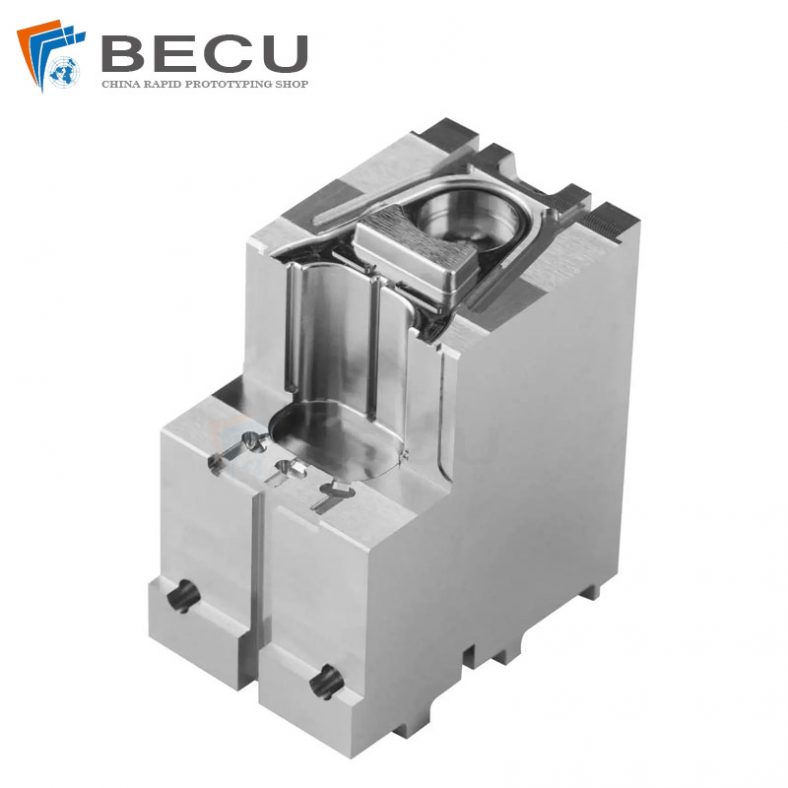
Small Precision Injection Molding Inserts
-
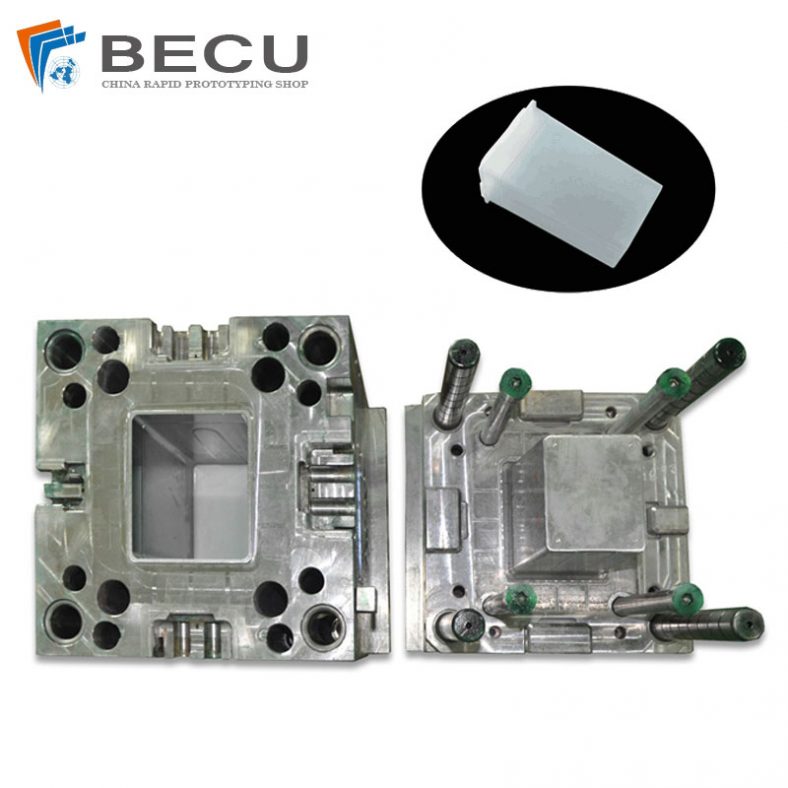
Plastic Storage Box Plastic Injection Mold
-
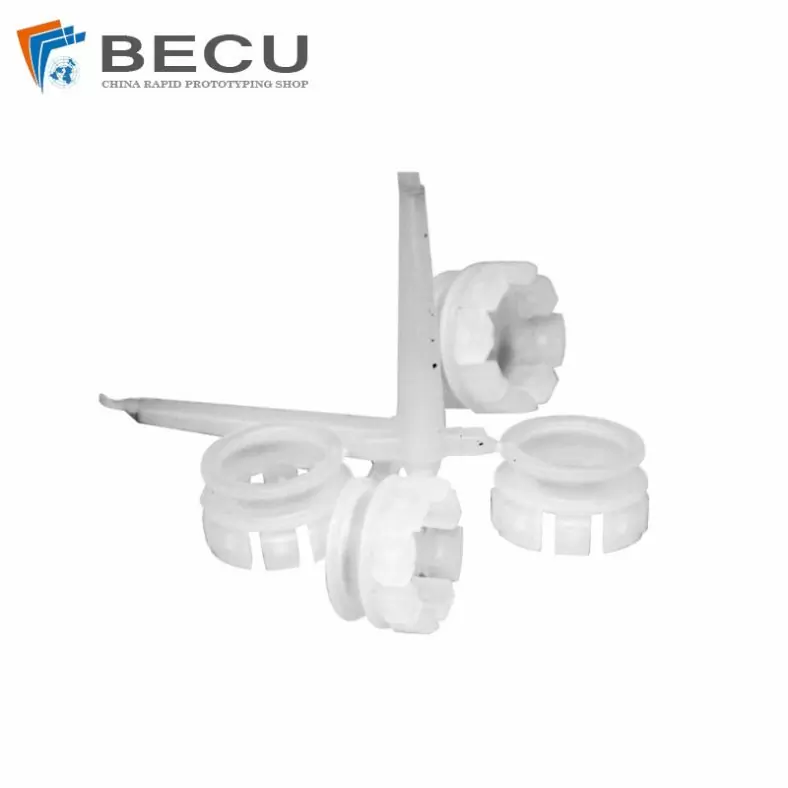
Injection Molding PE-UHMW Retaining Buckle And Ring
-
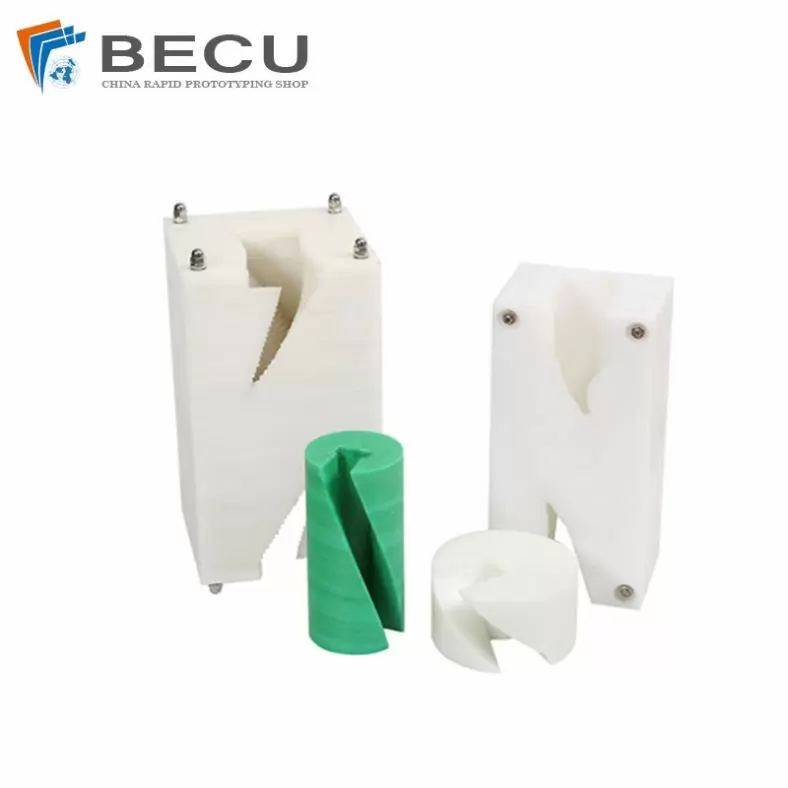
Cnc Machined UHMW-PE Bottle Turner
-
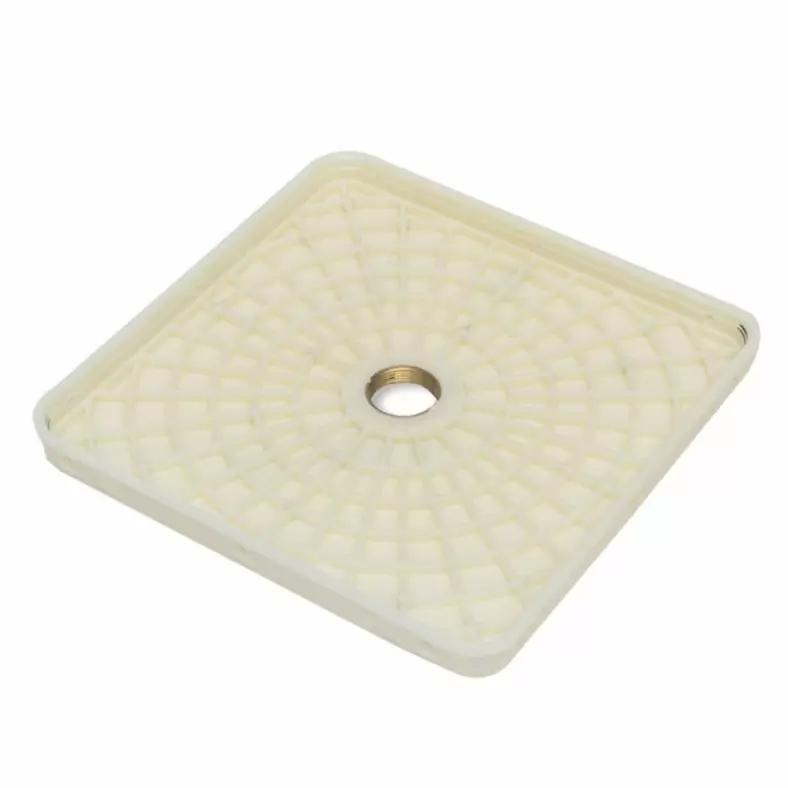
Shower Inclosure Sleeve By Plastic Injection
-
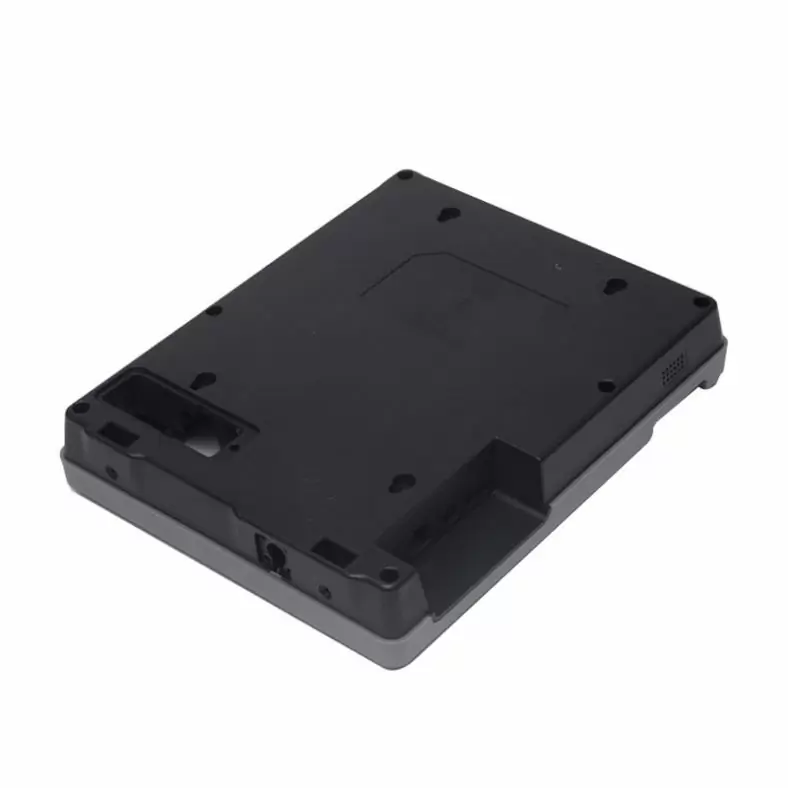
Injection Secret Security Machine Control Shell
-

Sewing Machine Industrial Control Shell By Plastic Injection
